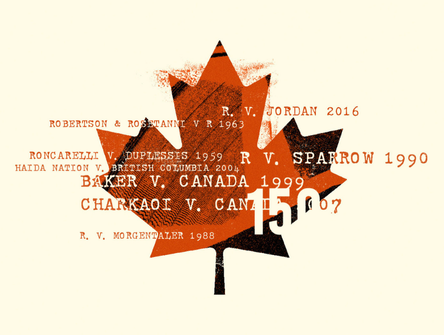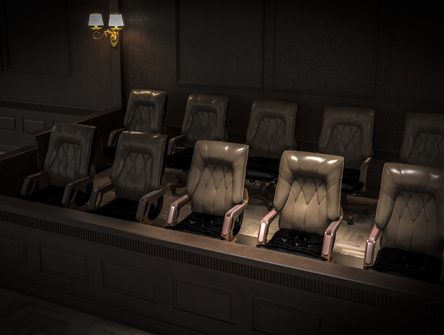Held to a standard of perfection
The Khill ruling by the Supreme Courts highlights ongoing concerns about instructions to juries and the Criminal Code's self-defence provisions.

Last week, the Supreme Court of Canada ordered a new trial for Peter Khill, who shot and killed an Indigenous man, Jonathan Styres, breaking into his truck in 2016. In the 8-1 decision, the top court ruled that the trial judge failed to adequately instruct the jury on the principles of self-defence to consider the accused's conduct throughout the entire incident leading up to the shooting.
However, some defence lawyers are hanging onto the words of the lone dissenter, Justice Suzanne Côté, who wrote that Khill's acquittal should have been restored.
"This Court's jurisprudence has long held that an accused is entitled to a jury that is properly — not perfectly — instructed," Côté wrote. "Trial judges are not held to a standard of perfection in crafting jury instructions; rather, in reviewing the trial judge's charge, an appellate court is to take a functional approach."
The Crown had appealed the acquittal on grounds that the trial judge made a significant error in law errors in his jury instructions to the jury. Though Côté agreed with one half of the majority's analysis that there was an error in law, she disagreed that it "was material to the acquittal, thus warranting a new trial."
In Côté's view, however, the trial judge's reference to "all of the circumstances" and his review of the evidence were "functionally equivalent" to giving a formal charge to the jury.
"The trial judge gave lengthy and detailed instructions on self-defence spanning 25 pages of transcript," Côté added. "His instructions on the s. 34(1) (c) element of self-defence show that Mr. Khill's role in the incident would have been obvious to the jury and was essentially uncontradicted."
According to Jody Berkes, a criminal defence lawyer in Toronto, Justice Côté got it right when she said there was an error, but the acquittal should still stand. The totality of the evidence should have been enough for the jury charge, he says.
"There's always been this notion in the law that when you search a judge's jury charge to see if it contains errors, you're not supposed to dissect it at the minutiae level," says Berkes. "You're not supposed to break it down and look at each piece in isolation. You're supposed to review the charge as a whole to determine if it addresses the particular issues in that trial."
Berkes notes that trials are an inherently dynamic process and adjustments have to be made. So while it is helpful for judges to have model jury instructions, a trial judge must modify those general instructions to focus on that particular trial's issues. It's often why appeals courts assume that juries are aware of particular issues that the trial judge may not have given a specific reference to in the charge.
"Jury instructions aren't magical incantations that if you forget the particular incantation, the entire jury instruction is considered erroneous," says Berkes. "That's where you come in with the functional approach. Functionally speaking, did the trial judge address all of the particular issues in that case so a jury would have understood what their job was with respect to the law?"
What's more, Berkes notes, defence appeals are often rejected on that basis. What Justice Côté is saying in Khill is that when a functional approach is taken, the jury should have understood that they needed to look at Mr. Khill's actions throughout the course of the incident – not in the two or three seconds before he shot the victim. Côté wrote that the jury was clearly in a position to fully appreciate the evidence to assess Khill's actions.
"It shouldn't be a different standard depending on who's appealing," says Berkes. "If the Crown is appealing, they should be held to the same standard as defence lawyers who are appealing. Acquittals should be very difficult to overturn – in the United States, even if there is an error of law, if there is an acquittal, jeopardy is attached and they can't appeal that. In Canada, we allow appeals from acquittals because we want justice to be served."
Michael Spratt, a partner at Abergel Goldstein & Partners LLP in Ottawa, acknowledges Côté's point that jury instructions can't be perfect. But trial judges need to strive for perfection because juries don't give reasons, he says.
"If it is a black box that spits out an answer, the only control and the only review we have is the input into that black box," says Spratt. "In this case, I would have to respectfully disagree with Justice Côté on whether this instruction was close enough to perfection given the omission in the instruction [...] It is quite arguable that it was not a complete and comprehensive enough instruction."
Spratt adds that there needs to be a more regular review of the kinds of instructions that judges give to juries, whether with the standard templates provided by the Canadian Judicial Institute, or with the "gold standard" charge provided by Justice David Watt.
"Given its importance and how often Crown, defence and judges lean on that draft jury instruction, it's probably something that we should have a committee or a transparent and accountable body review on an annual basis to make sure that it is the best possible jury instruction," says Spratt.
Spratt says that some judges lean so heavily on Watt's instruction that he's seen jury instructions that "looked great, but when it was read out, they included the "insert evidence here."
Noah Weisbord, a professor at Queen's Law in Kingston, also disagrees with Côté's dissent, but he notes that the problem is with the self-defence provision the Conservative government passed in 2013. He calls it is more permissive than Florida's infamous "stand your ground" law, which allows people to use deadly force when acting in self-defence.
"The [Canadian] law is so expansive, the jury just has to decide whether the actions were reasonable in the circumstances," says Weisbord. "The way that the 2013 law is designed, there is so much discretion put in the hands of the jury. Plus, the judge is allowed to give a Baxter instruction, saying that you don't have to weigh to a nicety what they did – the risk is more in the opposite direction, that the law has become too permissive."
"If there's a jury that feels sympathy for Gerald Stanley [acquitted in the fatal shooting of Colten Boushie] of or Peter Khill because they live next to a reserve and they are worried about property theft, real or imagined," says Weisbord. "Then their reasoning just gets hidden in there, and they can acquit the initial aggressor as happened in the Khill case."
Berkes notes that self-defence was a "morass" before the 2013 changes. While the new sections are logically coherent and easier to apply, he ultimately remains concerned that Parliament should stop changing the law based on a single incident that the public finds distasteful rather than waiting for patterns to emerge.


